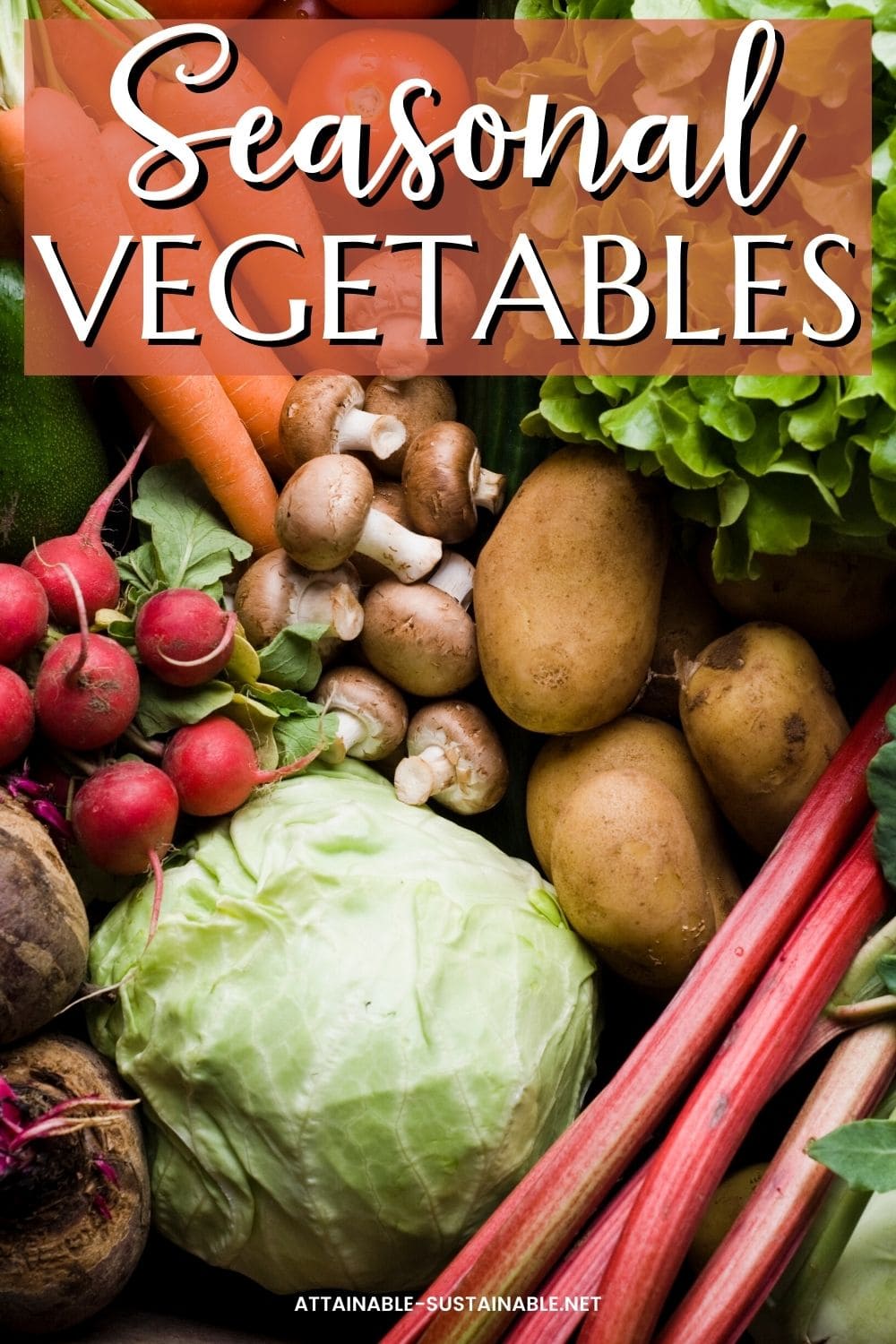When buying fresh, seasonality matters. Knowing what vegetables are in season can help you find produce at the best price and the peak flavor. Shopping for what’s in season also brings variety to your meal plan and may even encourage you to try something new!
Go here to find out about what fruit is in season!
 What Vegetables are in Season in Spring? (March, April, May)
What Vegetables are in Season in Spring? (March, April, May)
After a long winter, the sunshine and mild temperatures of springtime will bring newcomers to the garden and to the table.
- From March to May, artichokes remain at their peak all through spring. Season with salt and pepper, then sauté or throw on the grill. You can also indulge in spinach and artichoke dip or fried artichoke hearts.
- Fava Beans. Traditionally only available in specialty markets, fava beans are a great source of fiber and protein. They’re delicious made into a fava bean hummus! Their peak season lasts from March through May.
- Asparagus is in season from February until June, but it peaks in April and May. Sauté with garlic in olive oil for the perfect side dish to any dinner.
- Available from fall through late spring, leeks are usually considered a spring vegetable. They work well in hearty soups for chilly spring nights as well as in pasta dishes. [Learn about growing leeks.]
- Peaking in April, radishes add a colorful, peppery snap to spring salads or veggie bowls. You can ferment radishes, too — and their leaves are edible. [Learn about growing radishes.]
Vegetables of Summer (June, July, August)
The summer months provide an abundance of vegetables. This is the best time of year to enjoy a large variety of veggies. It’s also the perfect season to stock up and preserve for the colder months.
- Cucumbers. Although technically a fruit, most of us treat cucumbers as a veggie. They’re in peak season all summer long and make a wonderful cooling addition to sandwiches and salads. Try pickling some, too! [Learn about growing cucumbers.]
- Tomatoes. Another fruit that is often prepared as a vegetable, tomatoes have a long season from May through October. Stock up at the local market and preserve them as salsa, chutney, or crushed tomatoes to enjoy all winter long. [Learn about growing Roma tomatoes.]
- Okra thrives in hot weather (which is why it’s a Southern favorite), so you’ll see plenty of fresh okra available during the peak months of summer. Bake or fry for a delicious, slightly spicy flavor. Or roast okra it the way my family loves it. [Learn about growing okra.]
- Bell Peppers. Starting in July, bell peppers hit their peak and continue through the end of summer (as do most peppers). Bell peppers have a long shelf life of 1-2 weeks and are perfect for grilling, sauteing, salads, and more! [Learn about growing peppers.]
- Green Beans. Fresh green beans have a long season, but you’ll see them in abundance at the farmers market all summer long. They’re perfect for sautéing or canning for winter months. [Learn about growing green beans.]
- Zucchini and Summer Squash. These summer favorites are at their best starting in June and into early fall. Unlike other squash, their skin and seeds are edible, making them extremely versatile and easy to prepare. Combine them with eggplants and tomatoes for a delicious ratatouille or try my family’s favorite zucchini relish.
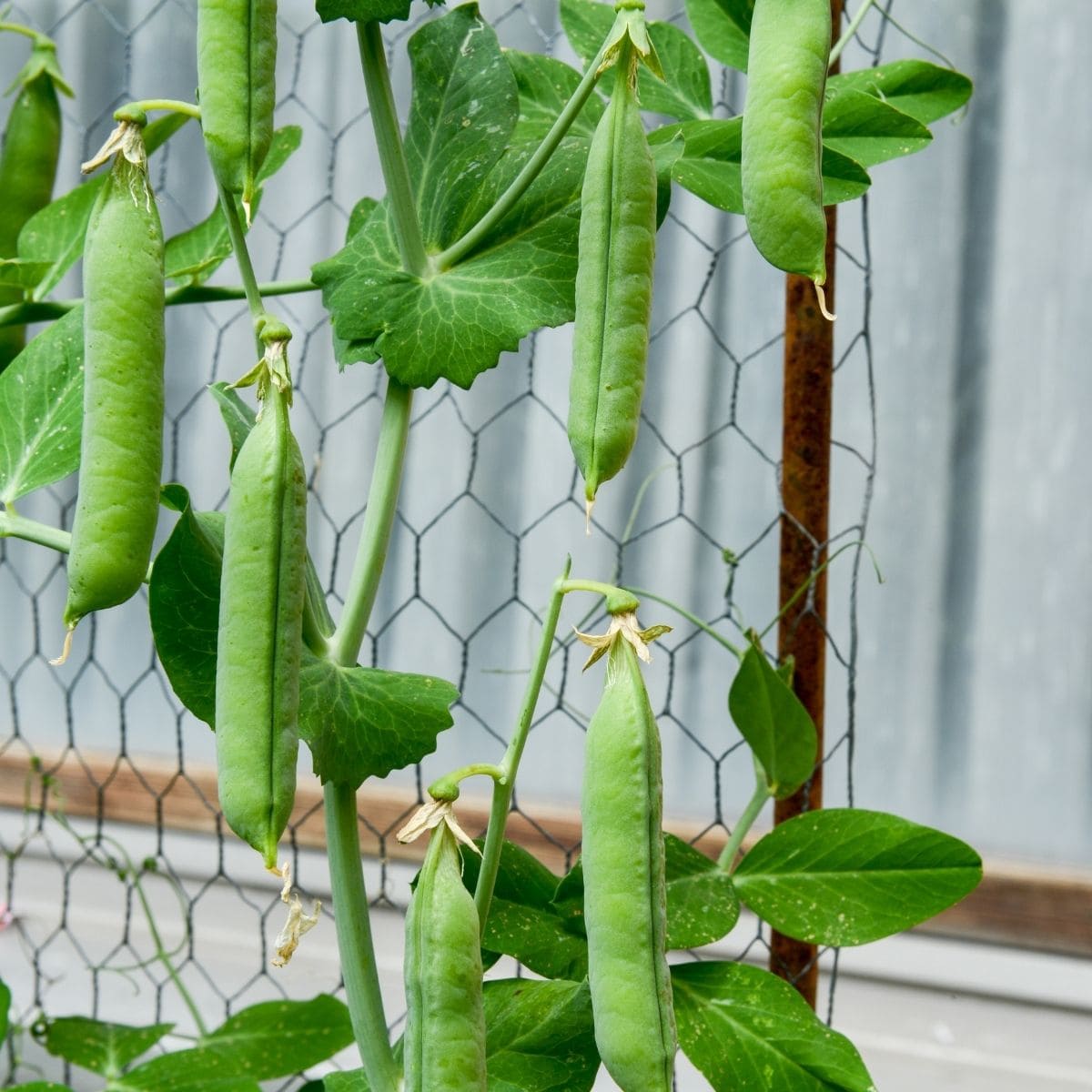
Snap peas growing on a trellis
What Vegetables are in Season in Fall? (September, October, November)
In the beginning of fall, you’ll see almost the same availability of vegetables as you do in summer. But as the days grow shorter and more chilly, you’ll find the selection begins to change.
- Sweet Peas. Sweet peas are economical and versatile. They come into season in the fall and on into winter. Fresh sweet peas should be briefly boiled or steamed to preserve their delicate flavor. [Learn about growing peas.]
- Carrots are a great fall crop because they will keep all winter in cold storage. They grow best in cool weather and also have a peak season in early spring. [Learn about growing carrots.]
- Broccoli is so easy to find all year, you might forget it has a season at all! But broccoli grows best during the cool months of fall or early winter. Fresh broccoli in season has a wonderful flavor with much less bitterness. [Learn about growing broccoli.]
- You’ll see plenty of celery hit the farmers markets in fall. Fresh, in-season celery has the best flavor and texture. It’s excellent for eating fresh or adding to hearty soups and stews. [Learn about growing celery.]
- Brussel Sprouts. Starting in September, Brussel spouts come into season and last all winter long. Roast in olive oil and a squeeze of lemon juice for the perfect flavor. [Learn about growing Brussels sprouts.]
- Pumpkins (and Winter Squash). Pumpkin is the most common winter squash, and all of these begin to peak in September on through the end of fall. In proper cold storage, winter squash can keep for 3-4 months. [Learn about growing pumpkins.]
 Vegetables for Winter (December, January, February)
Vegetables for Winter (December, January, February)
During the winter months, you’ll see some variety disappear from the seasonal market. However, new vegetables will hit their peak seasons in winter and bring new flavors to the table.
Take a Peek Inside My Book!
Get a free excerpt from my book, Attainable Sustainable: The Lost Art of Self-Reliant Living! You’ll also get my free weekly newsletter, complete with recipes, gardening tips, and a little peek at what’s going on around here — both the zany and the mundane.
- Beets are especially delicious when roasted or pickled; we love them fermented, too. This root vegetable is easy to find year round because it stores well, but its peak season actually begins in November and extends all through the winter. [Learn about growing beets.]
- Technically in season from late fall to early spring, cabbage is one of the most abundant winter vegetables. It’s wonderful for making sauerkraut, coleslaw, and stir fries. [Learn about growing cabbage.]
- Romaine Lettuce. Romaine is one variety of lettuce that is particularly cold-hardy. While it’s available year round, its peak season is throughout winter and will taste especially good during these months. [Learn about growing lettuce in containers.]
- Starting in late fall and extending all through the winter, turnips hit their peak season for freshness and flavor. They’re a hearty root vegetable that does well roasted or mashed. [Learn about growing turnips.]
- In milder climates, onions are a winter crop that tastes even more flavorful when freshly harvested. Enjoy onions fresh, caramelized, or in French onion soup. [Learn about growing onions.]
- Frosty fall temperatures convert the starches in parsnips to sugar, developing its sweet, nutty flavor.
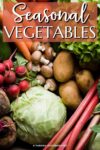
 What Vegetables are in Season in Spring? (March, April, May)
What Vegetables are in Season in Spring? (March, April, May)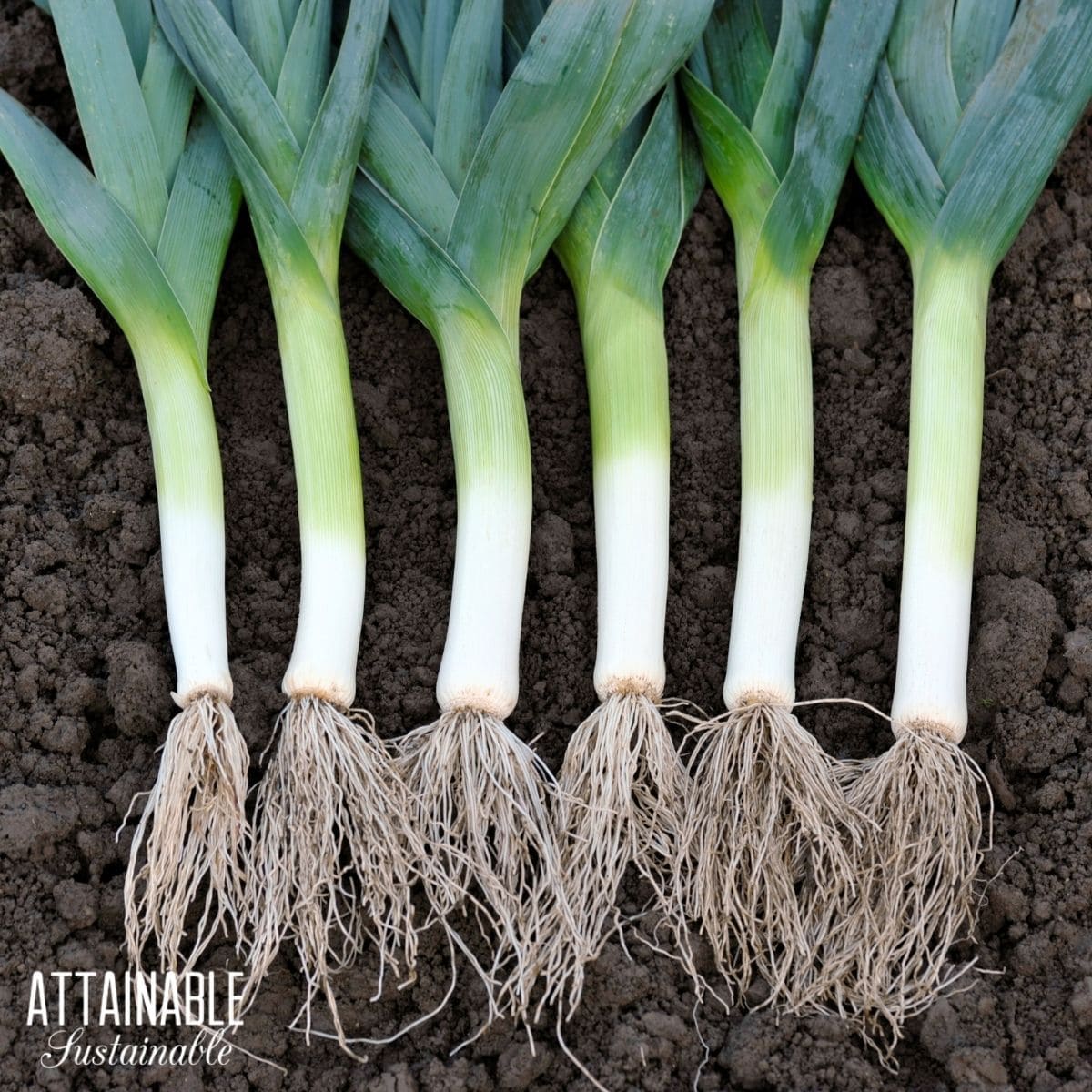
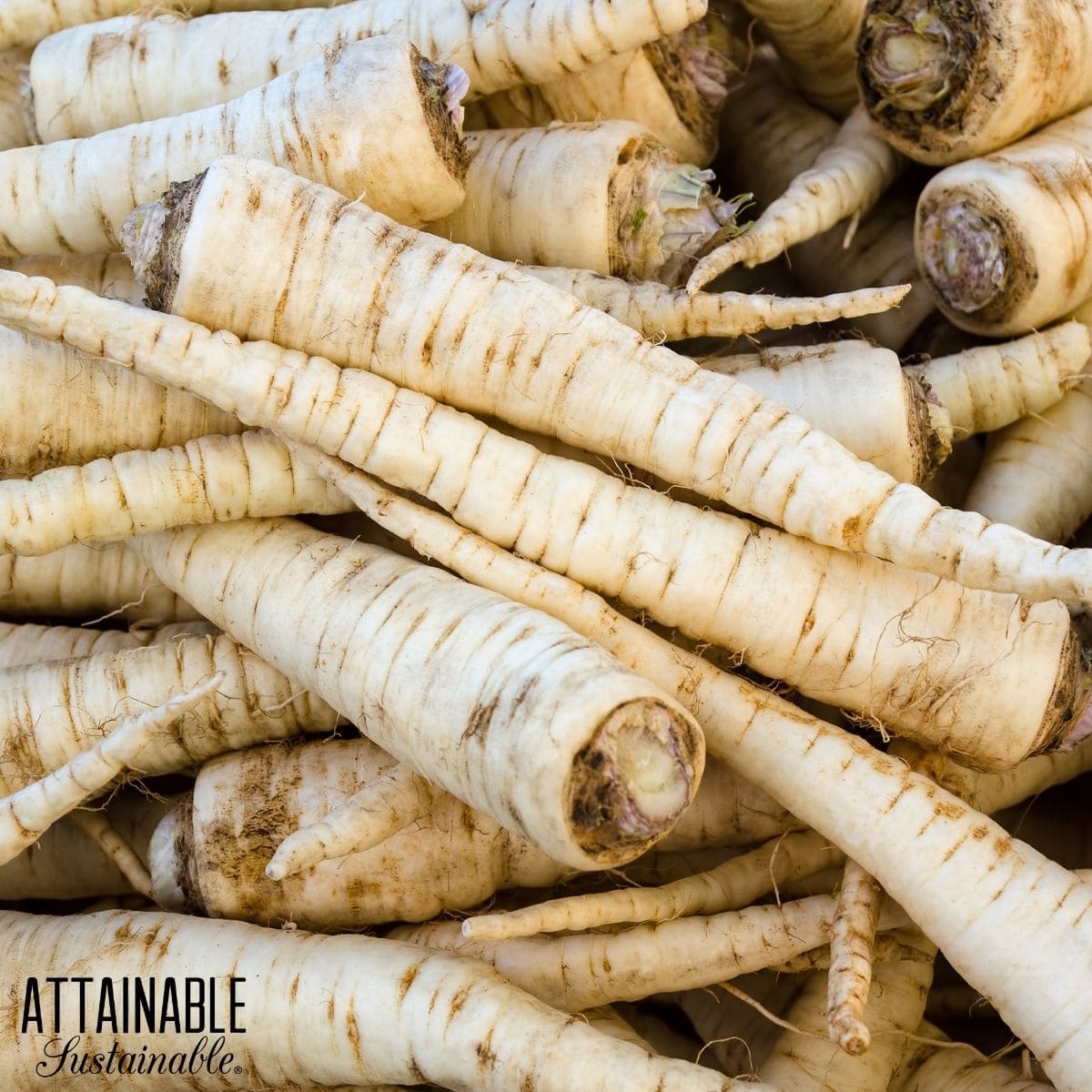 Vegetables for Winter (December, January, February)
Vegetables for Winter (December, January, February)